Gyeongcheondae: A Tranquil Morning View

<Gyeongcheondae>
Instead of heading straight to my destination, I exited at Sangju IC. My purpose was to see Gyeongcheondae. It was a little past 6 AM, so I figured I had time. Especially, at this hour, I thought I could fully enjoy the peaceful morning at Gyeongcheondae.
On the way, I made a brief visit to the Royal Tomb of Sabeol. I had noticed it when I first came to Gyeongcheondae over a decade ago. Back then, I didn't know it was the tomb of a Sabeol king and related facilities; I thought it was a Seowon (private academy) of a certain clan.
Sangju Hwadalli Three-Story Stone Pagoda (Treasure)
Sabeol Royal Tomb Stele Pavilion and the morning sun
Sabeol Royal Tomb
I walked towards Gyeongcheondae. It was a quiet morning path, devoid of people. Only the sounds of cuckoos could be heard occasionally. It was better maintained than when I first visited.
Finally, Gyeongcheondae came into view. I stood at the ridge and looked at the panoramic view of Gyeongcheondae. It was a familiar sight, but it seemed more refined and neat today. The morning air was very refreshing. The morning sun had already risen over the hill, but I still wanted to see the sunrise from Gyeongcheondae and wondered what it would be like. Today, I finally fulfilled that wish. I walked down step by step towards Muujeong Pavilion. I slowly walked to the place where Muujeong, Gyeongcheondae, the Nakdong River, and the sun in the sky were harmoniously combined. I carefully approached, trying not to miss any of the scenery that changed slightly with each moment, angle, and step.
Gyeongcheondae Muujeong
It's Muujeong! Very elegant. I was so curious about the view of the Nakdong River from Muujeong that, without thinking about examining the pavilion itself, I stood first in the very center of the pavilion and looked ahead. It was the Nakdong River. The magnificent Nakdong River unfolded before me. Between the branches of the tall, old pine trees standing alone in front of Muujeong, the morning sunlight sparkled as it flowed leisurely in eternal time. A thin layer of morning mist still lingered. The sun rose sharply over the mountain ridge across the river, scattering golden sunlight on the calm river water, as if welcoming me with an infinitely deep smile. I looked at the scenery through the branches of the tall pine trees and savored the scenery visible from beyond the pine trees. I was ashamed of myself for trying to distinguish which scene was more beautiful. As if teasing my heart, the sound of a cuckoo echoed through the quiet land, coo-coo, coo-coo.
Nakdong River
Tall pine trees and the morning sun
Morning sun and the Nakdong River
Now I could see the pavilion itself. There were cat footprints on the pavilion floor, as if a cat had climbed up. It was a hip-and-gable roof pavilion with three bays in the front and one and a half bays on the sides. Unlike other pavilions, it did not have rooms or walls, simply the pavilion's main hall. The main hall also had an extra half-bay in the form of a narrow wooden floor on the side so that one could look out at the Nakdong River. Perhaps that's why, although the pavilion itself wasn't large, it felt very open and airy, and seemed even larger than other pavilions.
Muujeong Pavilion harmonized with tall pine trees
I had thought the pavilion's name was 'Gyeongcheondae,' but a plaque inscribed with '舞雩亭 Muujeong' in cursive script hung on the pavilion. I didn't recognize the character '雩,' and the character '亭' was written in such cursive style that I couldn't tell what it was. Even though I didn't know what the characters were or what they meant, I could feel the power in the brushstrokes. Once again, I reflected on my shallow knowledge of Chinese characters and my life's path. Later, I found out that the meaning might be as follows:
Muujeong plaque
'Dance (舞) , Rain Ritual (雩).' After searching online blogs, I found the following introduction: 'A pavilion where dance rituals are performed while praying for rain when it doesn't rain.' However, I wanted to interpret it differently. In Chapter 25 of the Analects of Confucius, 'Advanced Disciples,' there is a very interesting story. Confucius asks his disciples Zilu, Ran Qiu, Gongxihua, and Zengxi how they would like to live in the future, and the disciples answer in turn. At that time, Zengxi (Zengzi's father) replied, "I would bathe in the Yi River, bask in the wind at the Altar of Rain, and return home singing." Confucius, upon hearing this answer, exclaimed, "Ah!" and said, "I want to be with Zengxi on his life's path." It is one of the most famous phrases that has been repeated countless times by later generations. I suspect that the name was taken from the 'Altar of Rain (舞雩)' that appears here.
Inside Muujeong Pavilion
To the left of Muujeong Pavilion, a small rocky peak rises, overlooking the Nakdong River. A deck path has been built around it for people to walk on. I moved my steps there. After climbing a little, I found several large stones with grooves carved into them. At first glance, they looked like foundation stones. I wondered if the current pavilion was built later and if there was a pavilion here in the past, and I took a picture with the Muujeong Pavilion and these grooved stones together in the composition.
Hahaha. Later, I read that these stones had a legend. During the Japanese invasions of Korea, General Jeong Gi-ryong, a brilliant general of the Ming Dynasty, obtained a winged horse, and these stones were the feeding trough for that winged horse.
Winged horse's trough and Muujeong
As I was about to go to the deck path after climbing the rocky peak, I saw a stele with Chinese characters carved into it, standing as if wedged between the rocks. The upper part of the stele was inscribed horizontally with '擎天臺 Gyeongcheondae,' and below it was written vertically '大明天地 Great Ming Heaven and Earth 崇禎日月 Chongzhen Sun and Moon.' I felt a sense of rejection at the sight of the two characters '崇禎 Chongzhen.' It was the reign title of the Ming emperor. Perhaps it was because I was seeing the Sadaejuui (serving the great) mindset of Joseon scholars, who were obsessed with the debate over loyalty to the fallen Ming Dynasty, that 'this bright Ming heaven and earth is the sun and moon of the Ming emperor,' which made me feel bitter.
First, I looked up the meaning of the character '擎 (Gyeong),' which means 'to rise high, to hold up high.' It seems to mean 'a pavilion that holds up the sky high.' I didn't know if this sky was 'the sky I generally know' or 'the sky referring to the Ming emperor.' When we say Gyeongcheonaein (revering heaven and loving people), the character '敬 (Gyeong)' is used for 'revering.' In this light, it is much more likely to refer to the latter sky. In particular, when we look at the life of Teacher Udam Chae Deuk-gi, who named this place Gyeongcheondae, it is even more so.
Gyeongcheondae Stele
Regardless of how the name was named and what the Chinese characters of that name were, the scenery from Gyeongcheondae was truly magnificent in its beauty. When viewed from Muujeong Pavilion, the view was less open due to the tall pine trees and the hills on the left and right, but the view from here was truly breathtaking, opening up the heart and chest.

Unobstructed sunrise scenery
Below the steep cliffs, the Nakdong River flowed leisurely, and the low mountain peaks across the river were gathered like lotus buds, and a very wide field spread out at the foot of the mountains. It seemed that rice planting in the fields was over. The rice plants were already coloring the fields with green. Towards Seonsan, where the Nakdong River flows, the morning sun shone golden light on the peak of Bibongsan Mountain across the river, and on this side of the river, the steep cliff curved like a bow. Looking down at Muujeong, it looked very small. It seemed that the presence of Muujeong Pavilion next to Gyeongcheondae added to its beauty. I changed my gaze and looked towards Andong, where the Nakdong River flowed down. The Nakdong River flowed down in a majestic way. It created the most beautiful scenery when it met the mountains, and it created fertile land, the lifeline of the people, when it met the fields. The rice planting in the fields was over, and the fields were already rippling with green waves, and the mountains were turning into a deep green, past the fresh greenery of May. The light morning mist on the lake-like river was like a child rubbing its eyes to wake up from sleep, friendly, beautiful, and infinitely magnificent.

Muujeong Pavilion and tall pine trees seen from Gyeongcheondae (far right)
Morning sunlight falling on the river, mountains, trees, and grass (between the front and right)
Golden waves holding the morning sunlight (front)
Nakdong River flowing down through Andong and Pungsan Hahoe (between the front and left)
Nakdong River and Gyeongcheondae mountain range harmonizing (left)
Rocks and mountain bamboo behind Gyeongcheondae (rear)
Standing at Gyeongcheondae, I tried to capture this feeling and atmosphere, including the sound of cuckoos, the morning sunlight, and the waves reflecting on the river, by closing my eyes, taking pictures, and taking videos.

The river looks like golden waves reflecting on a lake, like millions of shimmering silverfish.
I savored and photographed the sky and river in vertical composition with Bibongsan Mountain in the middle.
I was enjoying and savoring this beautiful scenery alone at this quiet time. It's not that I'm deliberately doing this in a formal way, but because people in the world are not interested in this scenery at this time.

I savor and capture the morning sun, pine trees, Bibongsan Mountain, river water, and Gyeongcheondae vegetation all together.

I imagined myself standing on the deck observatory, with the sky, morning sun, Bibongsan Mountain, river water, and bent pine trees, and savored and treasured the scenery.

The wide sedimentary layer pushed in by the river became fertile land that fed people.

I embraced the sky and river with the forest of trees.

Looking back at the rocks and pine trees as I descended from Gyeongcheondae.

Below, I looked down at Muujeong Pavilion and the tall pine trees, General Jeong Gi-ryong's winged horse trough, the cliffs and mountain range towards Seonsan, the mountain ranges across the river centered on Bibongsan Mountain, the Nakdong River flowing through eternal time with the lives and stories of all living things, and the river, which originated in Taebaek and flowed through Andong and moistened the wide plains of Sangju, met the sun in the sky again and shimmered with countless golden waves, coo-coo. I carried all this atmosphere and emotion in my heart.

The view of Muujeong and Gyeongcheondae together, seen from below.
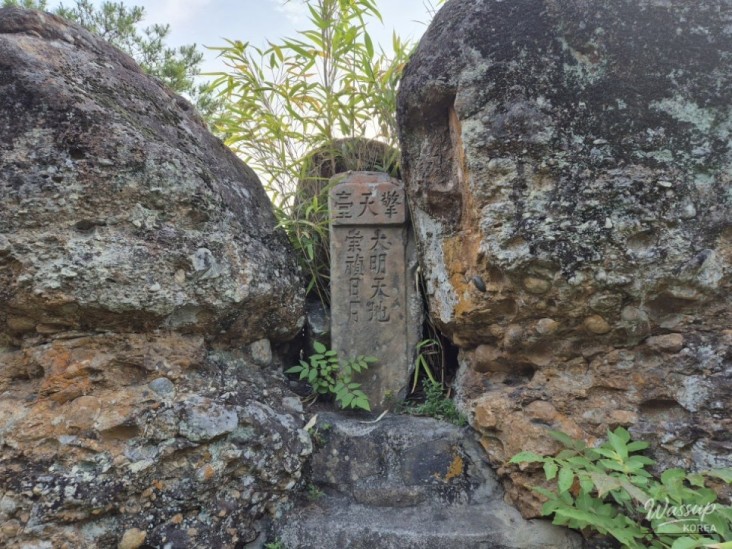
Gyeongcheondae's various trail map
※ The 1st of the 12 scenic wonders of the Nakdong River
Jacheondae
Name changed to Gyeongcheondae by Chae Deuk-gi
Bongsangok
Legend that General Jeong Gi-ryong, a brilliant general of the Japanese invasions of Korea, obtained a winged horse
Trough Trough where the winged horse ate
Yongso
Strengthening of tourist attractions centered on Gyeongcheondae
Bicycle Museum, Bibongsan Mountain Trail, film and drama filming locations, Nagaksan Park, etc.
Map of the Nakdong River bike path and trekking course near Gyeongcheondae
<Written by Bitbeol>

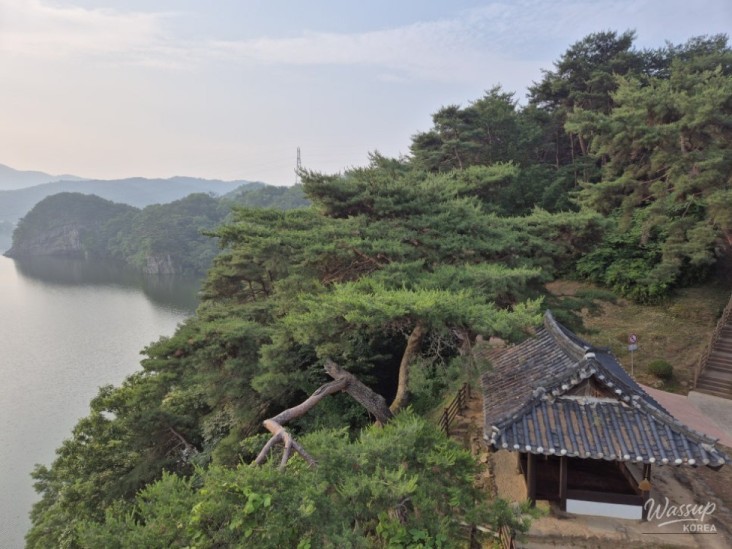


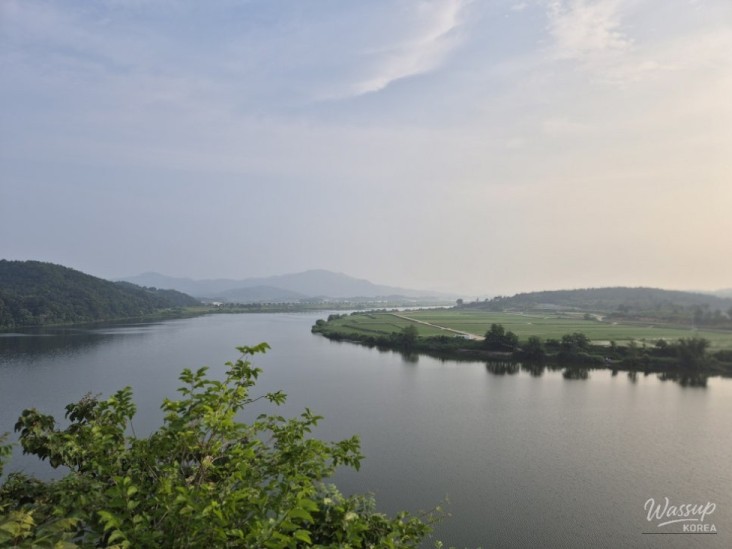




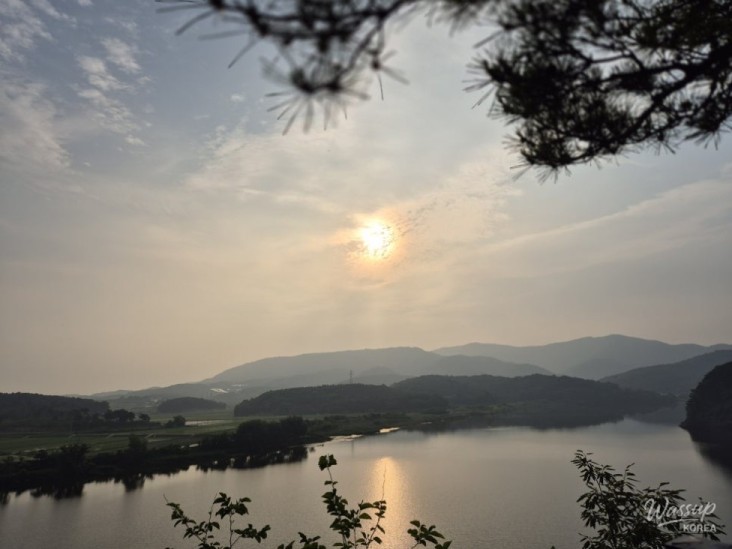
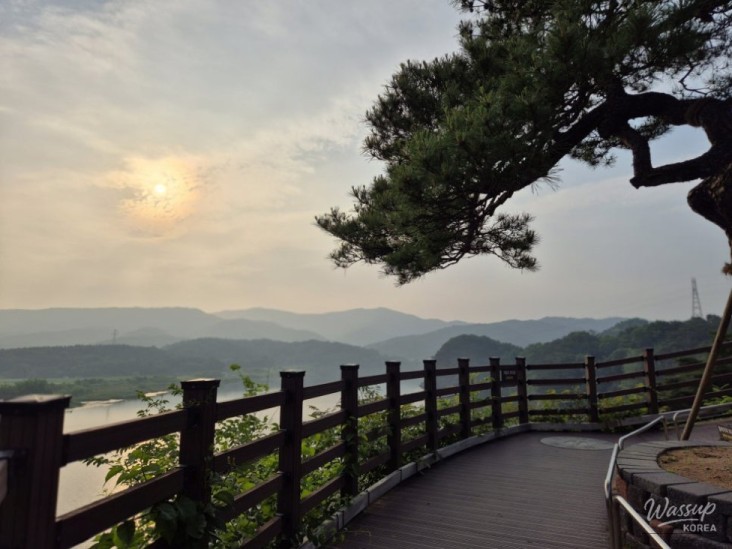






No comments yet.






